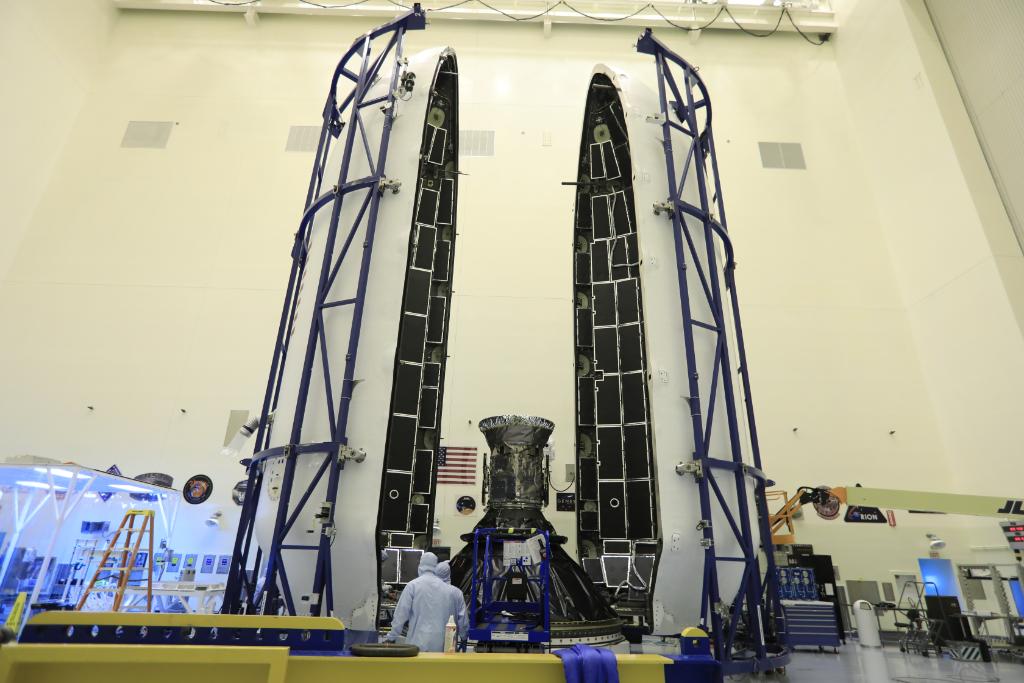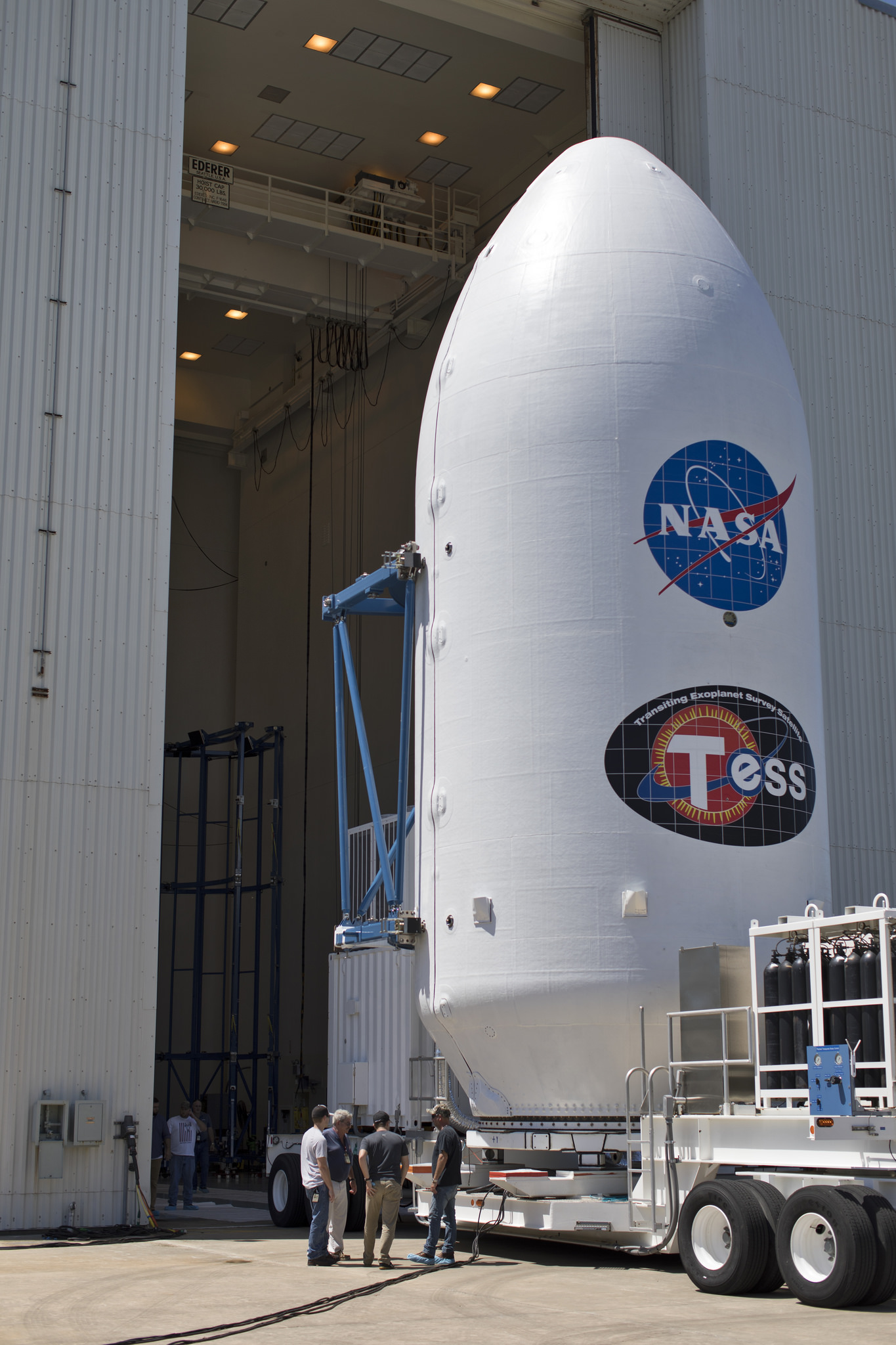SpaceX Rocket Is Ready to Launch NASA's Next Planet-Hunting Telescope

SpaceX is gearing up to launch NASA's next big exoplanet hunter on Monday (April 16), now that a successful test-fire of its Falcon 9 rocket is under the company's belt.
The Hawthorne, California-based SpaceX completed a static fire of the Falcon 9 Wednesday (April 11) at Cape Canaveral Air Force Station in Florida, according to a post from SpaceX on Twitter. The test raised the two-stage rocket atop its launchpad — without the satellite payload yet attached — to practice loading fuel and to briefly fire the first stage's engines.
In the meantime, NASA has sealed the Transit Exoplanet Survey Satellite (TESS) into its payload fairing inside Kennedy Space Center's Payload Hazardous Servicing Facility, preparing it to be attached to the top of the rocket.

TESS arrived in Florida from construction and testing at Orbital ATK's facility in Virginia on Feb. 12 to prepare for launch. After launch, TESS will turn its gaze to the skies to search for signs of planets passing in front of at least 200,000 stars, pointing the way for future telescopes, like NASA's James Webb Space Telescope, to investigate more deeply. It will survey the Southern Hemisphere of the sky for its first year of operations and then switch focus to the Northern Hemisphere, covering almost the entire sky.
After launch, TESS will take about 60 days to navigate into its final orbit around Earth — an angled orbit that circles Earth twice for each full orbit of the moon.
The satellite is set to launch on a SpaceX Falcon 9 rocket from Cape Canaveral's Pad 40 on Monday at 6:32 p.m. EDT (2232 GMT). You can visit Space.com for live coverage starting at 6 p.m. EDT (2200 GMT). SpaceX plans to re-land the rocket's first stage on a drone ship after launch.
Email Sarah Lewin at slewin@space.com or follow her @SarahExplains. Follow us @Spacedotcom, Facebook and Google+. Original article on Space.com.
Get the Space.com Newsletter
Breaking space news, the latest updates on rocket launches, skywatching events and more!
Join our Space Forums to keep talking space on the latest missions, night sky and more! And if you have a news tip, correction or comment, let us know at: community@space.com.

Sarah Lewin started writing for Space.com in June of 2015 as a Staff Writer and became Associate Editor in 2019 . Her work has been featured by Scientific American, IEEE Spectrum, Quanta Magazine, Wired, The Scientist, Science Friday and WGBH's Inside NOVA. Sarah has an MA from NYU's Science, Health and Environmental Reporting Program and an AB in mathematics from Brown University. When not writing, reading or thinking about space, Sarah enjoys musical theatre and mathematical papercraft. She is currently Assistant News Editor at Scientific American. You can follow her on Twitter @SarahExplains.









